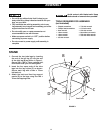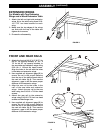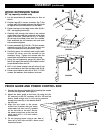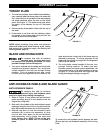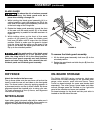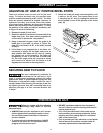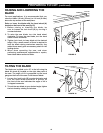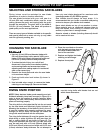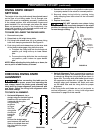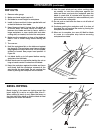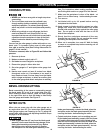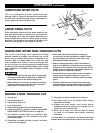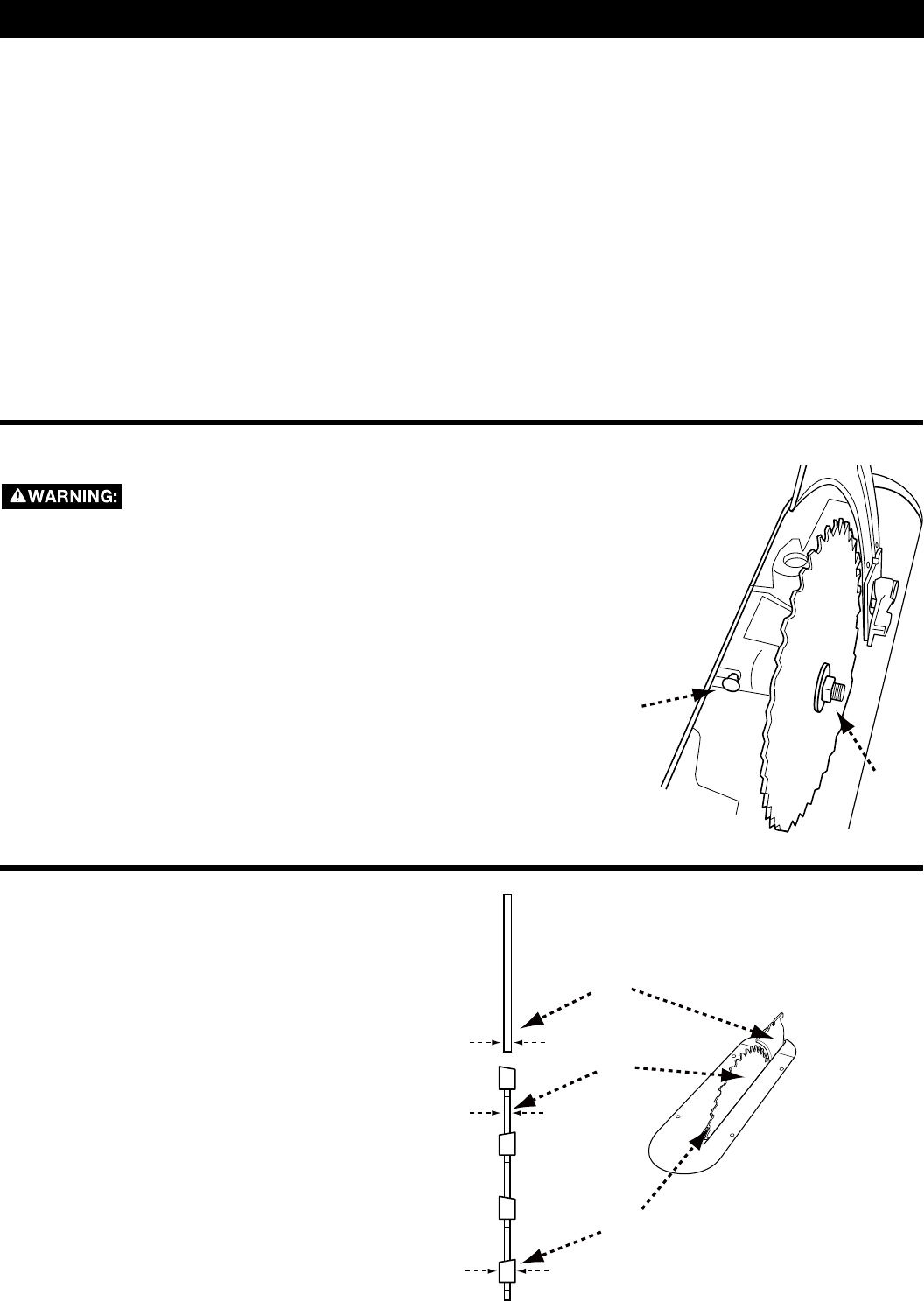
19
ASSEMBLY
SELECTING AND STORING SAW BLADES
Riving knives must be matched to saw blade
dimensions in order to function effectively.
The saw blade furnished with your new saw is a
10-inch (254 mm) combination blade, used for cross
cutting (across the grain) and ripping (with the grain)
through the workpiece. The arbor hole of the blade is
5/8-inch (16 mm) diameter. This blade will produce a
good quality cut for most applications.
There are many types of blades available to do specific
and special jobs such as cross cut only, rip only, dado
cuts thin plywood, paneling, etc.
Use only saw blades designed for maximum safe
operating speeds of 3,600 RPM or greater.
Saw blades should always be kept sharp. It is
recommended that you locate a reputable sharpening
service to sharpen your blades when needed.
Never stack blades on top of one another to store.
Place material such as cardboard between them to
keep the blades from coming in contact with one
another, or place them in storage drawer.
Abrasive wheels or blades (including diamond) should
not be used on this saw.
RIVING KNIFE POSITION
NOTE: Safety devices, blade guard assembly and anti-
kickback assembly have been removed in Figure 18 in
order to show the location of specific features. When
operating the saw, these safety devices should be in
place and working properly.
The riving knife is a flat plate that fits into the cut made
by the saw blade and effectively fights kickback by
lessening the tendency of the blade to bind in the cut.
It must be installed and properly positioned for every
through cut and for every non-through cut unless the
riving knife would interfere with the workpiece.
The riving knife thickness (A) must be greater than the
blade body or plate thickness (B) and less than the
kerf or cutting width (C) as shown in Figure 15. The
riving knife provided with this saw is 2.2mm thick and
may be used only with a 10-inch (254mm) blade with
0.102-inch (2.6mm) minimum kerf width and 0.073-inch
(1.8mm) maximum body thickness. Do not attempt to
CHANGING THE SAW BLADE
• Use only 10-inch (254 mm) diameter blades with
5/8-inch (16mm) arbor holes, rated at 3,600 rpm or
higher, 0.102-inch (2.6mm) minimum kerf width and
0.073-inch (1.8mm) maximum body thickness.
• To reduce the risk of injury, turn unit off and
disconnect it from power source before installing
and removing blades and accessories, before
adjusting and when making repairs. An accidental
start-up can cause injury.
1. Remove the throat plate and raise the saw blade
to its maximum height.
2. Push and hold arbor lock button (A) shown in
Figure 17.
3. Use included arbor wrench to remove the blade
retaining nut and flange (B). Remove old blade.
B
A
FIGURE 17
use this riving knife with blades that are not
within these dimensions.
4. Place the new blade on the arbor
with the teeth pointing down as
the blade rotates toward the
front of the saw table.
5. Replace and tighten the blade
retaining nut and flange.
6. Replace throat plate.
FIGURE 18
A
B
C
PREPARING TO CUT
(continued)



